URS-File – How To Control Chapters In Report Browser
If you are interested in preparing templates for reports of similar and repeating projects – this post is for you. You’ll learn about the generated URS-File of Report Browser as well as some of the available parameters. Independent on your prefered input it’s applicable for both SOFiSTiK Structural Desktop and Teddy.
Report Browser
The Report Browser represents one of the available documentation applications of SOFiSTiK. It generates a textual output to create the project documentation.
By performing the calculation of the program modules and tasks – in SOFiSTiK Structural Desktop – each single program module generates a single report file (PLB-File). The PLB-File represents the native Report Browser file format.
Report Browser allows reviewing the single report files. But also supports an option to compile those single PLB-Files to one full report. Open the full report (all generated PLB-Files into one single report) from the SOFiSTiK Structural Desktop toolbar by expanding the Report Browser command and selecting the second command “All Reports”. The individual reports can be either accessed through the above command or by right-click to the task in the project tree.
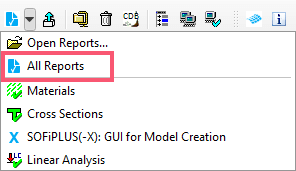
Teddy, on the other hand, generates one full PLB-File for the entire project only.
Within Report Browser, you’ll find the document outline on the left-hand side. Set the content of the report for your project as required by activating or deactivating chapters, subchapters and graphics by clicking the lightbulb, the book or graphic symbol.
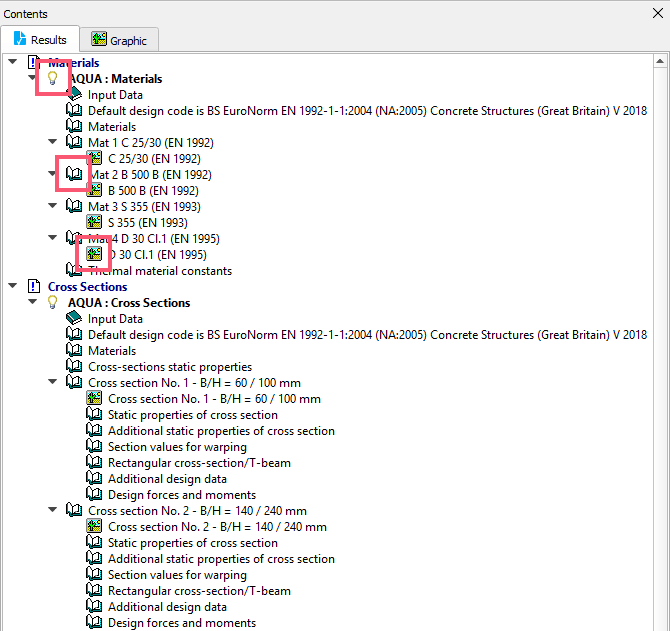
All settings, as well as added elements such as user-text, graphics and page breaks made in Report Browser, are stored in the corresponding PLB-File. Bear in mind, if you delete the PLB-File, you lose all modifications too.
How to avoid losing modifications made to the outline?
As soon as you made any modification in the PLB-File, Report Browser generates/updates the URS-File in the project directory.
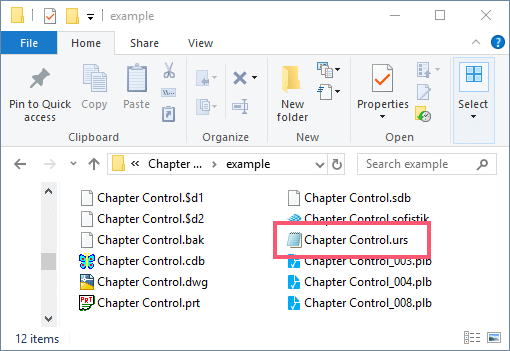
The URS-File works as a backup for settings and modifications of the PLB-Files. And is the only option to restore those (if the PLB-File was deleted). Simply copy the URS-File to the project folder and open the report. Report Browser will recognise it take the settings to the outline.
The URS-File
The URS-File is basically a simplified transcript of the report outline of Report Browser. The URS-File updates its content as soon as you made a change in Report Browser. What is useful, as it allows visually changes easily in Report Browser.
However, this automatism can also destroy a well-set URS-File to use as a template for the project. So keep a backup of the URS-File in a save place. To access the URS-File open it in Teddy or any text editor you prefer.
You might have noticed, every generated PLB-File within the project directory is named project + _xxx.plb. The xxx represents an internal number which is essential, not only for the report outline. The identification and sorting of the chapters in the URS-File relate to those numbers too. The internal number is accessible in SOFiSTiK Structural Desktop when converting the graphical tasks into text tasks only. It’s indicated as urs:xxx to the right of the program module name (+PROG ASE urs:8).

Changing this number impacts the interaction between a modified URS-File and the outline in Report Browser. Or, can also make a well-prepared URS-File useless. Furthermore, if you use the URS-File on another project with an entirely different program module setting, it won’t work either as the numbering might be different.
Report Browser Outline vs URS-File Structure
Let’s start by comparing the Report Browser outline and the file structure of the URS-File to get the first idea about both.
+ Report Browser Outline
Chapters, subchapters and graphics building the structure of the outline. Each item is represented in a separate line. Switch off single chapters by clicking on the lightbulb or book symbol. The black arrow expands or collapses entire chapters if subchapters or sub-entities are available.
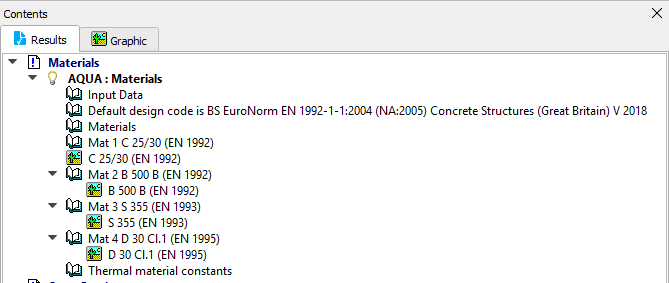
Besides the above options drag and drop allows you to change the position of chapters in the outline. Quite straightforward to organise the report to your requirements with the above options.
+ URS-File Outline Structure
The options in the URS-File are similar to those of the Report Browser. However, it’s not that self-explaining due to the text-based input. The most relevant input lines to control the outline are those starting with MODU (program module) and KAPT (chapter, subchapter, graphics).
Besides the item type further parameters are available:
- Type of the item (MODU, KAPT, TEXT, …)
- Activation and visualisation
- The position of the item in the outline
- Description of the item
To be fair, there might be a good chance for more types and parameters available as the URS-Files isn’t documented. The described parameters are based on my own research.
Understand and Modify the URS-File Input
The easiest way to learn more about the URS-File inputs is by comparing changes made in Report Browser with the generated URS-File.
After you did a change in the outline, check the project folder and open the URS-File. The structure of the might be familiar to you if you have used CADiNP before. Unfortunately, the Program module URSULA isn’t supported by a user manual. However, similarities such as PROP, SHOW and PAGE to other program modules and obvious.
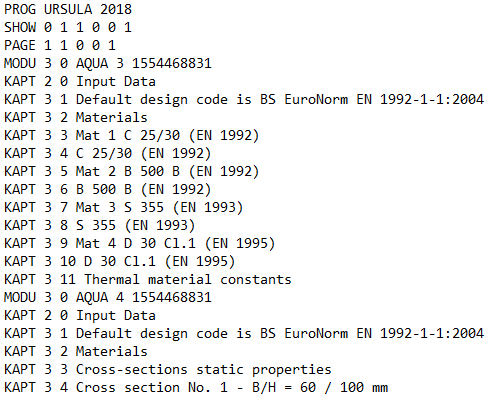
Let’s focus on the 4 most important parameters to make modifications to the outline.
+ Type of the item
The first parameter is the type of items. The most important are
- MODU (program module) and
- KAPT (chapter, subchapter, graphics).
- TEXT (user-defined input)
- IMAG (graphic)
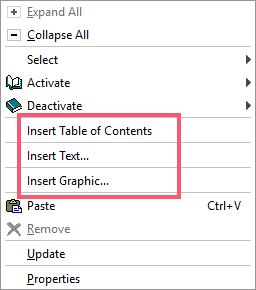
To learn more about TEXT and IMAG – I recommend inserting a text and graphics in Report Browser. Insert Graphic requires the location of the graphic, which will also be stored in the URS-File.
+ Activation and visualisation
To match the report requirements, options such as activating and deactivating chapters, subchapters and graphics are available. In Report Browser clicking the lightbulb or book symbol will do the job. However, within the URS-Files entering digits correlated to the requirements section is needed.
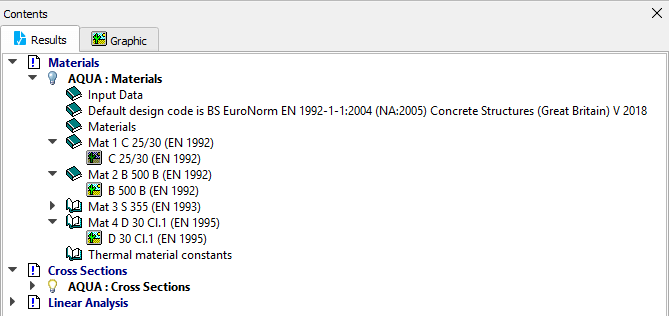
The parameter responsible for the representation is on the second place of the input line. In the line below it is marked with an X. Replace the X with the digits 1,2,3 or 4 to get the specific property. This works for all item types. (MODU, KAPT, TEXT, IMAG, …)
MODU X 0 AQUA 3 1554452469
X = 1 activated, collapsed in outline
X = 2 deactivated, expanded in outline
X = 3 activated, expanded in outline
X = 4 deactivated, collapsed in outline
Collapsed and expanded only applicable if subchapters available
+ Item Position in the Outline
The third parameter (the second digit and represented as Y below) of the input line is related to the position of the item in the outline.
KAPT 3 Y Materials
Reorder the items in the URS-File requires renumbering the digit Y of the input-line and moving it to the correct position in the list. You actually need a properly sorted list. A much more convenient method is the drag and drop option in Report Browser.
+ Chapter Names
The last entry in the item line is the name of the chapter, subchapter or graphics. Renaming isn’t possible in the URS-File or in Result Viewer. There is one exception – added elements such as text and graphics can actually be renamed.
+ Tasks
There is actually one option less available in the URS-File compared to Report Browser. Controlling the Tasks – created in SOFiSTiK Structural Desktop – isn’t covered in the URS-File.
Wrap-Up
If you are using the refinement available in the tasks within SOFiSTiK Structural Desktop or by utilising the ECHO command in Teddy to manipulate the output there is no need to investigate further in the URS-File. But if you deep dive into output optimisation you’ll benefit from
+ restoring the outline within Report Browser if the original PLB-File was deleted,
+ duplicate the outline to another project (in consideration of the internal numbering) and
+ generate the outline based on a fully parametrised project.
Software version: SOFiSTiK FEA v2018-08.
